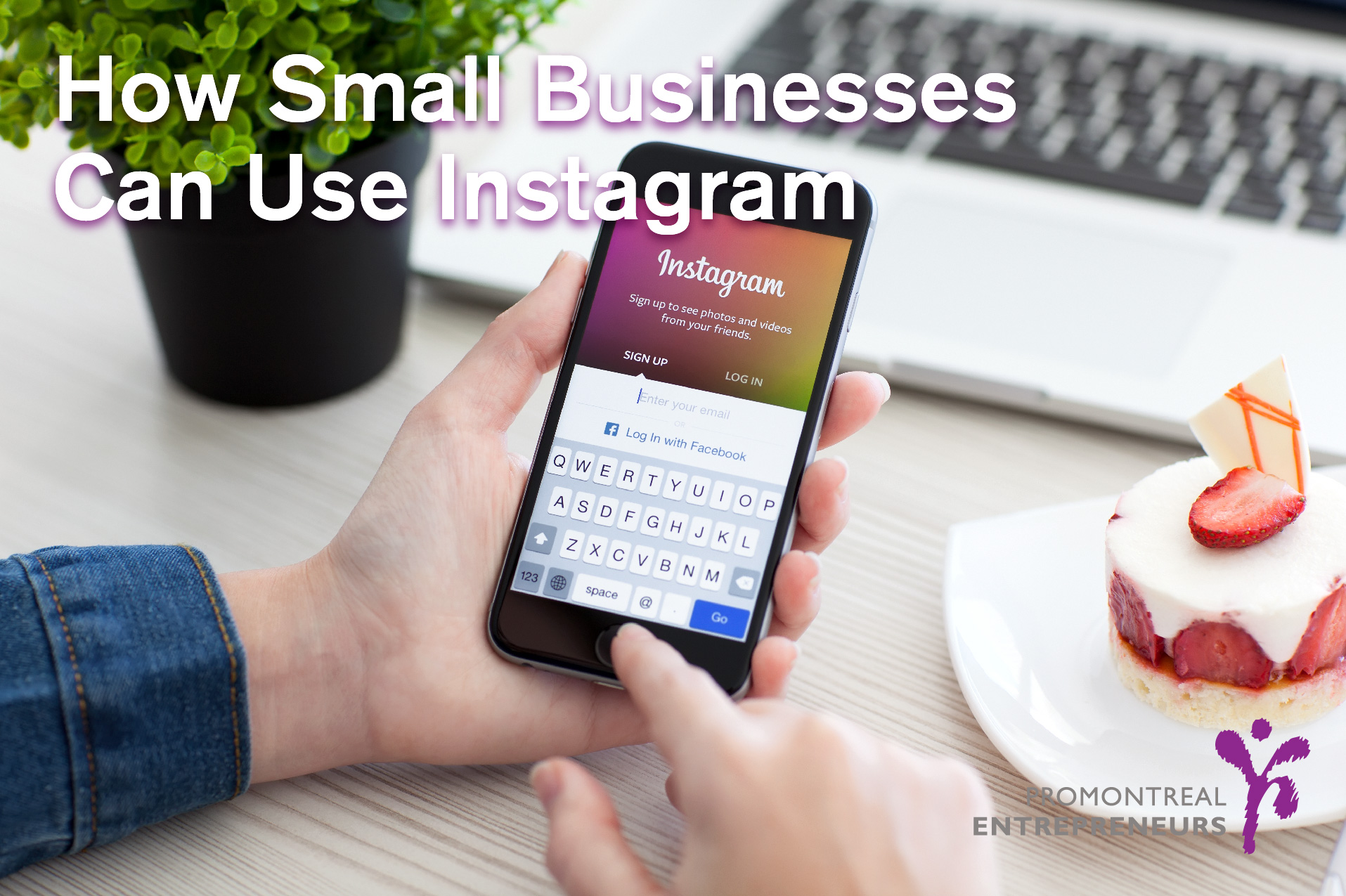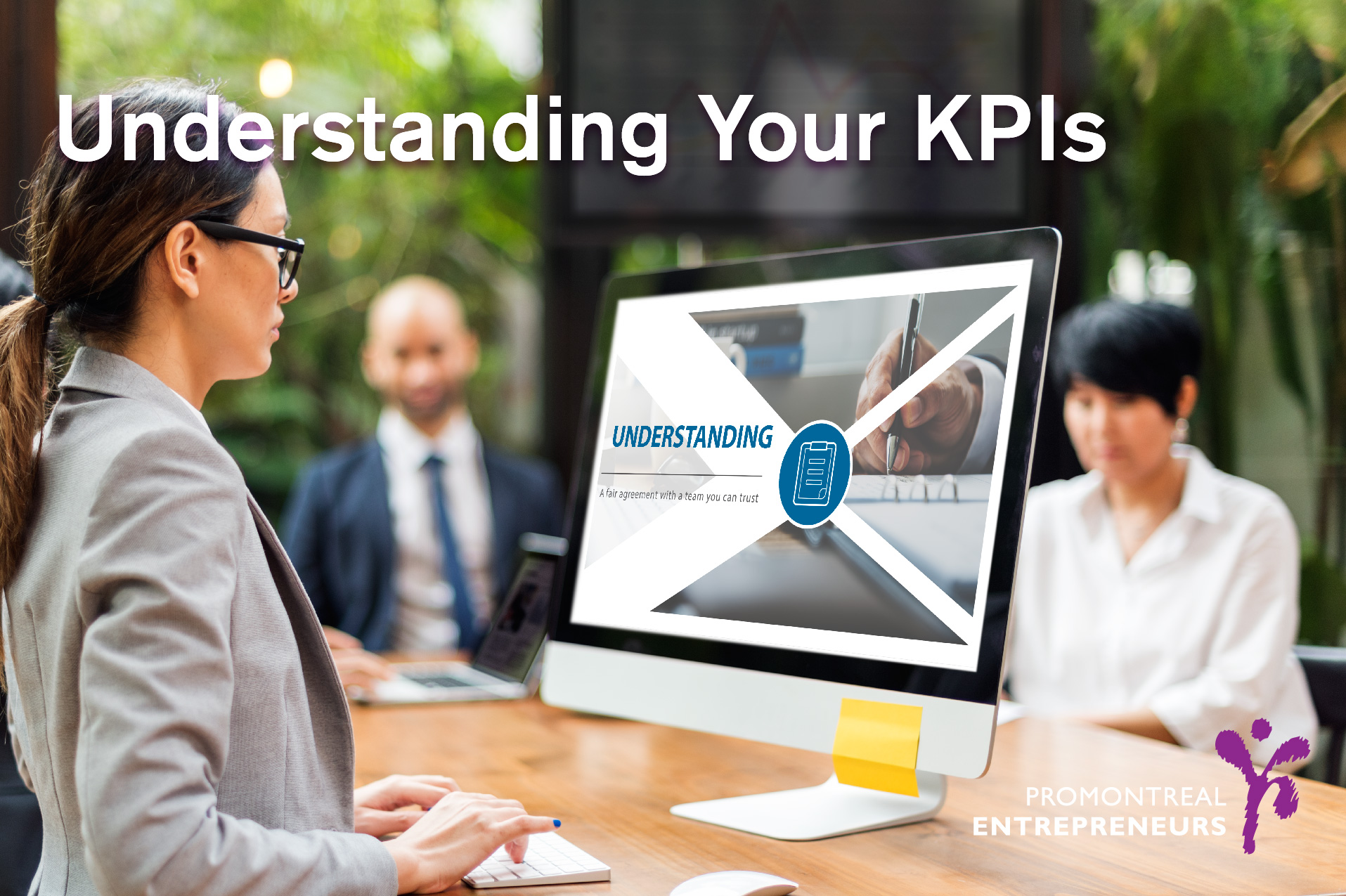Category Archives: Start-ups
How to Build a Perfect Pitch-Deck
When you see about 20 pitch decks a week over 15 years, you see A LOT of repeat mistakes. Many argue that there are different ways to create a pitch deck. This, however, is only half true. There is actually only one right way of building a pitch deck. Think about building a house. Every house needs a foundation, frame, walls, windows, paint, etc. A house can have its unique design and characteristics, but without the proper structure it can collapse. This too applies to your pitch deck. It’s all about the Story. Entrepreneurs often are confused by the term “Story”. A story is not adding meaningless details, jokes or anecdotes. Stories captivate, inspire and influence the audience you are pitching to. If done right it will get you closer to getting the deal you are hoping for. For maximum impact, here are the slides you must have in your pitch deck.
The Introductory Slide:

Captivate your audience by introducing your company, explaining what you do and why you do it!
The Need:

The need is caused by the problem you are aiming to solve with your product. Essentially, the problem is the villain of your story. As seen in any superhero movie, the villain is a very complex and multifaceted character. The same goes for the problem you have identified. Here is where you, the entrepreneur, explain the gap/problem/challenge that must be solved. This is best told in a story. You can choose to tell your own story, that of a friend, family member, or the user persona. You can even frame your presentation in a way that permits for a story telling technique. Include a clear and concise problem statement.
The External Environment and Market Potential:

This slide is crucial for your deck. Basically, it explains, why you and why now. Going into detail about the external environment and market potential also includes some number crunching. The TAM (Total Addressable Markets), SAM (Segmented Addressable Markets) and SOM (Share of Market) will give an indication of the market size. Don’t forget to address the values of the markets, what was spent on similar solutions in previous years, etc. Additionally, go over market trends among users that show a shift in behaviour. What is essential to highlight is that you’re working within a growing and profitable market!
Competitive analysis:

The goal here is to showcase your understanding of the market and its competitors. In order to do this in the best light you must highlight how you differentiate yourself from the competition. Visually, you can do so by preparing a quadrant or petal-diagram showing how you measure up to your competitors, listing them by name. More specifically, explain why you are better, what you understand that they don’t, what makes your product better, and what is your unfair advantage against them. Your differentiation statement will be the highlight.
The Solution:


Your solution is the “hero” of your story. For every quality your villain possesses, your hero embodies a counterpart. Not only does a hero come save the day, but it has also earned the trust and respect of a loyal group of people that rely on the hero. Describe how you are solving the issue with a simple solution sentence. A solution sentence should be formulated as such: we’re doing X (solving a problem), for Y (for a specific audience) by Z (what are you? A Platform/app/solution/tool, etc.). Don’t forget to mention your secret ingredient that is allowing you to do this. When showcasing your demo make sure to clearly portray the user experience, all relevant features, and what makes it beneficial to specific users. But remember, keep it simple!
The Business Model:


When presenting your business model the purpose is to describe your main revenue model (ex. Subscription, ads, affiliate, revenue share, etc.) Additional revenue streams should be mentioned as well. Describe the milestones you’ve reached in funding, product, users, revenue, growth, endorsements, partnerships, etc. If you haven’t reached any major milestones yet, that too is okay. Make sure to give a truthful depiction of where you are at, and use some metrics to help illustrate this.
Go-to-Market Plan:

You must showcase the strategies that will allow you to penetrate the market and gain users. More specifically, if you are a dealing with different consumer groups you must indicate the different channels you plan to use to acquire each customer. Specify the cost-per-acquisition (CPA) for all. Even though you might not have money at the start, you may have plans of putting together a sales team, establish strategic partnerships, distribution channels, content market and social campaigns. Makes sure to vocalize all of these elements.
Moving forward:


Here is where you get to the aftermath, hoping your hero is triumphant. You present a short-term and long-term plan for your business moving forward. Any exciting additional features or products in that you intend to explore? Plan on using new revenue streams? This is where you showcase the bigger vision you have for your business! Don’t forget to present your KPIs.
Roadmap and Round Objectives:

When going over your funding requirements, list the main allocations such as R&D, Sales and Marketing, Team Expansion, etc. Your “round objective” should indicate where you wish to be when you get to the next round of funding (for example: this will take us X months and X users/revenue/downloads, to breakeven and have positive cash flow).
The Team:

The Conclusion:


Whether your presentation has many, or very little slides is not of importance. Some superhero get one movie, while others get numerous sequels. This does not make one better than the other. What is important is that you have communicated your ideas simply and efficiently. Utilizing storytelling, while also using the essential founding elements for a pitch deck is the only way of getting the investor interested.
Why PME
Top 5 Legal Advice for Startups
 Starting your own business is an overwhelming process. In addition to all tasks you must accomplish in building your product or service, there are certain legal concepts you must understand. This will help you make the best decisions for your start-up. What may seem minor at the moment can have a large impact on your business in the future. Here is our list of the most important legal concepts entrepreneurs need to understand.
Starting your own business is an overwhelming process. In addition to all tasks you must accomplish in building your product or service, there are certain legal concepts you must understand. This will help you make the best decisions for your start-up. What may seem minor at the moment can have a large impact on your business in the future. Here is our list of the most important legal concepts entrepreneurs need to understand.
1. Why incorporation is necessary:
Incorporating your business has countless advantages. For one, it limits your personal liabilities. Limited liability means that a shareholder is not liable for the debts incurred by the company. To add, when your company is incorporated, shareholders usually only have rights against the corporation itself and not its owner. Of course, unless fraud is committed. Incorporating comes with advantages tax-wise as well. This includes lower income tax rates. It is also important for you to understand the difference between federal and provincial incorporation. One is not necessarily better than the other. It all depends on the nature of your business and the vision you have for it. The main difference between both is that federal incorporation will allow for you to do business across the country under a same business name, even if some other company is already using a similar name in a given province or territory. However, you are only able to operate from a given jurisdiction if you have incorporated provincially. So incorporating in Quebec, for instance, doesn’t mean you can’t do business nationally. It just means that you are required to operate your business from Quebec.
2. Why a shareholders agreement is needed:
While everything can go as planned at the early stages of business development, this may not always be the case. You and your business partner may disagree on issues like how to grow your business, what to do when unable to make a unanimous decision, or what would happen in a time of death or injury. A shareholders agreement is way to minimize potential business disputes between owners by clarifying how decisions are to be made. It also sets the stage for the procedure during a dispute resolution. Because it portrays a sense of stability, having a shareholders agreement also assists with funding from investors and potential business partners.
3. Why trademarks are important:
Protecting your business name and logo is crucial. If you don’t protect your name and logo at the very least, any business founded after yours has the right to use it and, more importantly, trademark it as their own. Having your name and logo trademarked will allow for legal recourse against those trying to use a same or similar logo or name. Your trademark will also appear when other entrepreneurs conduct a trademark search. The Canadian trademark registration process is fairly straightforward. All information can be found on the Government of Canada website. Remember that in order to trademark a logo or name, you must use it. Use it or lose it!
4. Avoiding legal problems with my employees
Navigating through the basics of employment law is necessary to avoid costly lawsuits. This should come with the understanding that company founders, like all others working in the company, should be classified as either contractors, or employees, and be compensated as such. For instance, founders can be paid with options, shares and restricted stock units only if they are classified as contractors. Otherwise, all people classified as employees must be paid minimum wage at the very least. In many cases, start-ups often look to hire unpaid interns. Though this may seem like a financially sound decision, hiring unpaid interns comes with its own set of guidelines and details. Unpaid internships are not permitted in Quebec, unless they fall under the three narrow circumstances listed in Quebec’s ALS (An Act Respecting Labor Standards). Because unpaid internships are becoming more popular you must ensure that you are complying with the regulations of the ALS. With labor laws constantly changing you must also remain informed on employment contracts, workplace injuries, and regulation on overtime.
5. Understand equity financing:
If you’re going down the route of equity financing you must understand the difference between equity and preference shares. Equity shares are ordinary company shares. Meaning that the amount of shares held by an owner is the portion of their ownership in the company. On the other hand, preference shares get priority over equity shares. This means that preference share owners get precedence on matters like distribution of dividend, and repayment of capital during liquidation. There are however, different types of preference shares depending on the amount of power you are willing to give away. This includes, participating preference shares, non-participating preference shares, convertible shares, non-convertible shares, cumulative shares and non-cumulative shares. Since equity financing involves trading partial ownership for capital, your control may be more diluted as a result. The real question is how much influence you’re willing to give up and legal repercussions involved.
You may be wondering whether spending money on a lawyer so early in the game is necessary. You may also contemplate taking on the legal work on your own. What you should keep in mind is that there are certain aspects of running a business that should not be compromised. You should not be looking to save money when it comes to legal activity. It is may be costly now, but suffering the consequences of lack of legal expertise will cost you a lot more later on.
Instagram for Small Businesses
 We all know the power of Instagram. It’s filled with big corporations competing for the attention of millions of Millennials, and members of Generation Z. Small businesses will be intimidated by big corporations with unlimited marketing budget, large following and quality content. But this is the beauty of social media. Though all of these things can seem like deterrents at first, they are also the reason why you must give Instagram a try. But how can you use Instagram for small business? Instagram can be a great way to promote your brand, connect the physical world with the online world and launch a new product or service. What you use and how you use it will depend on your goals and your organization.
We all know the power of Instagram. It’s filled with big corporations competing for the attention of millions of Millennials, and members of Generation Z. Small businesses will be intimidated by big corporations with unlimited marketing budget, large following and quality content. But this is the beauty of social media. Though all of these things can seem like deterrents at first, they are also the reason why you must give Instagram a try. But how can you use Instagram for small business? Instagram can be a great way to promote your brand, connect the physical world with the online world and launch a new product or service. What you use and how you use it will depend on your goals and your organization.
Instagram has about 800 million active daily users, Instagram is the fourth-most downloaded app in the US. So, if you are a business owner intimidated by entering such a crowded platform, keep in mind that capturing even the smallest percentage of your audience is still a significant amount of people. As a social media platform Instagram is unique because it’s all about visuals and aesthetics. All you need is your smartphone camera, and an idea of how you would like your brand to be represented. Instagram is also reported to have higher levels of interactivity between customers than other social media platforms. In other words, a smaller number of Instagram followers are more likely to share your content than a large group of Facebook follows. If you are running a business that targets customers based on lifestyle or income, as opposed to age, this works in your favor. With Instagram the chances of all members of your audience seeing your content increases as well. Because Instagram allows you to share your Instagram posts on Facebook automatically, your Facebook followers will be exposed to your Instagram content as well.
Instagram has its share of benefits. However, it is important not to have a same objective for all social media platform. Instagram is not Facebook, Google+, LinkedIn, Snapchat, or any other platform you are using. Its goal is to drive interaction with customers, website traffic, and sales through appealing visual content. So if you are a small business owner, unsure about how to use Instagram effectively, here are a few things to look out for.
-
Visuals
Visuals are the main currency of Instagram. Be relevant! Post compelling content your followers won’t be able to find anywhere. such as, business and industry-related material. Feel free to post staff pictures, behind-the-scene pictures of how your product is created, relevant quotes, community events etc. Whatever your brand image may be, create visual consistency. There should be a clear idea of brand and messaging. This is important. Having this nailed down with what your brand represents is key before undertaking any social media outlet. An example can be to Use the same filter for every post. this allows you to establish a style that becomes recognizable to your followers. One of your goals on Instagram is to get users to stop scrolling when they get to your image. You want followers to like or leave a comment, which means your visuals have to be compelling and recognizable. If you have a strong driven mission you can post visuals that embody this as well. You also don’t have to be a graphic designer to have visually appealing content. Affordable platforms such as Canva are easy to use and offer great quality work.
-
Hashtags
Creating a hashtag for your business is a must. Encourage your customers to post pictures of your products with this hashtag. To increase customer interaction, have hashtag sharing contests and ask your business partners to use it through cross-promotion. Don’t be afraid to include other hashtags relevant to national holidays or mainstream news. This can drive new customers to your page. You will be intimidated at first but don’t be! You can Check out what similar businesses are posting and the hashtags they are using. Having this information will make your page noticeable to the right people who need your product or service.
-
Followers: Of course, having many followers is beneficial. However, at your early stages focus on having the right followers, as opposed to the number of followers. Some businesses have opted to buy Instagram followers. While this may be appealing at first, there are no long-term added benefits. This means no added interaction, exchange, or purchases just money that could have been spent elsewhere. The goal is to increase the conversation rate, not just the amount of followers. So make sure you follow and interact with your targeted followers, business partners and industry leaders.
-
Consistency: Consistency works hand-in-hand with timing. This does not mean you have to post every day. Posting often and at the right time is key. Posting when your audience is likely to be online is best. Of course, this depends on your industry and customers. Posting quality content a few times a week is better than posting every day for the sake of meeting a quota.
-
Effectiveness: There are several free platforms and metrics used in order to measure the effectiveness of the way you are using your platform. Other than the number of likes and shares, Iconosquare and Sumall are a few sites that can measure your effectiveness for free!
We hope this helped you shed some light into Instagram. Think of it as an affordable way to continue interacting with your audience. There is little to lose and much to gain. Worst case, you realize the platform isn’t for you. Even so, you learned a valuable lesson about your business along the way.
Introducing Your Start-Up to an Angel Investor by E-mail
 You can only make a first impression once. Introducing your start-up to an angel investor is nerve-wracking to begin with. However, introducing your start-up to an angel investor by e-mail is a lot more challenging. You cannot charm or socialize with an individual by e-mail the same way you would in person. Standing out is much harder. Of course, you are better off reaching out to an angel investor by e-mail after having met them in person. But this isn’t always the case. For this reason it is important that you hatch out a plan that will captivate the interest of an angel investor. As said Alex Iskold, Managing Director of Techstars, there are 3 key notions to stick to when contacting an angel investor: be simple, clear, and awesome.
You can only make a first impression once. Introducing your start-up to an angel investor is nerve-wracking to begin with. However, introducing your start-up to an angel investor by e-mail is a lot more challenging. You cannot charm or socialize with an individual by e-mail the same way you would in person. Standing out is much harder. Of course, you are better off reaching out to an angel investor by e-mail after having met them in person. But this isn’t always the case. For this reason it is important that you hatch out a plan that will captivate the interest of an angel investor. As said Alex Iskold, Managing Director of Techstars, there are 3 key notions to stick to when contacting an angel investor: be simple, clear, and awesome.
Your Structure should be simple-
Being concise is key. Your initial e-mail should only about 5 sentences long, with a one-pager attachment maximum. An angel investor should be able to decipher, based on just these few lines, if this is an opportunity of interest. Keep in mind that your e-mail does not need to answer every question that an investor would have. It simply needs to strike enough interest to schedule a meeting. The following steps can provide for a good blueprint for your email.
Introduction: Your name and the name of your business
Business: 2-3 sentences about your business & why it’s interesting
Traction: 1-2 sentence about your traction, customers, and progress over time
Why: Looking for feedback, or connecting because you have background.
Ask: Schedule a quick phone call, meeting, or ask for feedback via e-mail
Be as clear as possible-
Do not use complicated jargon or terms in order to explain your business. Most investors do not have time to untangle your e-mail in search of clarity. Your first e-mail must be able to stand alone as a comprehensible pitching tool. Note that you should have two goals with this introductory e-mail. First, you have to persuade an angel investor to engage with you in conversation. Second, give this person the tools to communicate the information clearly to others if need be. This is not to say that angel investors should not have questions about your business after reading your e-mail. It is simply to make clear that the questions they have should not be with regards to your description of the company but with regards to the company itself and its potential.
Focus on Market-Product Fit-
Often times entrepreneurs mistakenly put an excessive amount of focus on the solution instead of the business problem. Reaching out to an angel investor should include focusing on the ‘why’. A strong opportunity statement, which will communicate exactly why an angel investor should care about your business is crucial. When a profitable opportunity presents itself, investors will almost always be willing to listen, at the very least.
Adopt the right attitude, don’t oversell yourself and be truthful. Standing out by e-mail will be difficult. Especially since many angel investors are busy and receive numerous e-mails daily. Just remember that more times than not, less is more. Keep it simple, and make your case as to why they should at least hear what you have to say.
Understanding Your KPIs

Key performance indicators, also known as KPIs, are measurable values that showcase how effectively a company is achieving business objectives. Businesses set benchmarks early on and use KPIs in order to determine if they are achieving the goals they set out. KPIs can either be high-level or low-level. In other words, they can encompass the company as a whole, or focus on departmental goals. Monitoring KPIs is crucial for measuring progress and making necessary modifications to your business strategy. However, the focus should not be on the KPIs themselves. It should be on their significance and knowing their impacts. Let’s review some of the KPIs that are important for founders to thoroughly understand for strategic purposes. Please note that not all KPIs are relevant to all types of businesses.
- Customer acquisition cost (CAC):
CAC is the amount of money you need to spend on sales, marketing and related expenses, on average, to acquire a new customer. This tells you about the efficiency of your marketing efforts, although it’s much more meaningful when combined with some of the other metrics below, and when compared to competitors’ CAC.
- Customer Retention Rate
Acquiring new customers is one thing, but retaining them is even more important. Your customer retention rate indicates the percentage of paying customers who remain paying customers during a given period of time. The converse to retention rate is churn (or attrition), which is the percentage of customers you lose in a given period of time. When we see high retention rates over an indicative time period, you know the company has a sticky product and that is keeping its customers happy. This is also an indicator of capital efficiency.
- Lifetime value (LTV)
LTV is the measurement of the net value of an average customer to your business over the estimated life of their relationship with your company. Understanding this number, especially in its relation to CAC, is critical to building a sustainable company. Consider the ratio of CAC to LTV to be the golden metric. This is a true indicator of the sustainability of a company.
- Cash Flow
Cash flow will give founders indication on the state of their sales and margins. In order to determine your cash flow forecast you have to add the total cash your business has in its savings to the projected cash value for the next four weeks. Then, subtract the projected cash-out for the next four weeks. Cash flow forecasts allow entrepreneurs to notice issues with cash flow at early stages and make the appropriate modifications. Understanding your revenue and monthly expenses (fixed and variable) enables you to calculate the company’s monthly burn. If the company starts the month with $100,000 in cash and ends the month with $90,000 in cash, its burn rate is $10,000. If a company’s monthly net cash flow is positive, it is not burning cash. A keen focus on runway is critical to the survival of any startup. Runway is the measure of the amount of time until the company runs out of cash, expressed in terms of months. Runway is computed by dividing remaining cash by monthly burn.
- Inventory Turnover-
Inventory turnover is a ratio that shows the amount of times a company’s inventory is sold and replaced over a given period. This is especially important in the retail industry. Basically, it is how fast a company is selling their products. This is then compared to the industry average. Inventory turnover is important because it indicates the quality of your inventory planning methods and controlling techniques. Additionally, by improving inventory turnover a retailer can easily increase its profitability by carrying fewer inventories.
- Accounts Payable Turnover-
Accounts payable turnover is the ratio that measure how quick a company can pay its suppliers. When the turnover rate declines, it means that the company is taking longer to pay its suppliers. This may imply deteriorating financial situation. It can also mean a change in payment terms with suppliers. If a company seems to be paying fairly quickly this can be due to suppliers’ demand for fast payment, or that a business is taking advantage of early payment discounts.
- Revenue Growth Rate-
Having an understanding of how fast your company is growing is critical for analysis. There are many accounting rules that apply as to when and how you should declare revenue. As an entrepreneur understand that your actions as a businessperson can have direct effect on how your business is portrayed. You can control when contracts are signed, how the contracts are structured, in order to affect how much revenue is declared in a given quarter.
- Market share-
Market share is main tool used in order to determine the effectiveness of your marketing campaigns compared to the competition. More specifically it can be calculated with shares of unit sales, share of customers served, share of total industry revenue, share of dollar volume, etc. Market share is important because it ranks you with your competitors. It gives you the most tangible indication of market growth, the quality of your CRM programs and branding initiatives. Make sure to also determine the value of your market share as well. For instance, having 60% market share in an industry that is slowly deteriorating is a red flag.
KPIs, like metrics, are crucial for business owners to monitor. Different companies monitor different KPIs, depending on their business goals. However, these KPIs should be understood by all business owners. Though you may not be dealing with technical accounting, understanding how these affect the way your business is perceived is of priority.
The Importance of Brand Building

As Jeff Bezos so eloquently said, “Your brand is what people say about you when you’re not in the room.” The statement seems straightforward. But the process of building your brand is the difficult part. As an entrepreneur, you should commit to building a brand identity that resonates with your target market. So many people forget that businesses, especially those that are B2C, must have and portray a brand identity that will be the foundation of all future marketing initiatives. There are essentially 3 ways to build a brand: creating brand elements, secondary associations and marketing programs. However, before you start pouring your heart into your marketing strategy, take a moment and devise a market research plan. Investing in thorough market research is the only way to brand successfully.
How does an entrepreneur build a brand that will resonate with my customers? Though large corporations have more resources to create and develop a brand identity and conduct appropriate research, the process is practically the same. There are 6 steps to the marketing research process (click on the hyperlink for more details). (1) Defining the objective and problem (2) Determining research design (3) Designing and preparing the research instruments (4) Sampling and collecting data (5) Analyzing data and (6) Visualizing and communicating results. Though this seems complex, the hassle is definitely worth the effort. Following these steps, by conducting quantitative and qualitative research, will let you get to know your customers and their expectations of you. This implies conducting surveys, looking into credible secondary data, running focus groups, conducting interviews, testing for brand recognition, testing for recall, and associations. The goal is to know your customer enough to develop a brand identity that will appeal to them, compared to that of the competition.
If you don’t present your brand identity to the right people in the right manner, you missed the opportunity to acquire them. This will be time consuming and costly to reverse the associations people have already made with your brand. This is not to say that you can’t change your brand identity in the future. To the contrary, many successful companies have had to make brand-related changes in order to remain relevant over time. For instance, Victoria’s Secret was rebranded countless times before their angel wings took over retail, Apple nearly went bankrupt before becoming a staple in tech, and UPS used to be big and boring before it became personal and innovative. But, changing your brand image is costly and takes time. Keep in mind that you are a start-up, and will likely have a limited budget. Doing it right early on, will save you money, time and stress.
Whether you are an established business or start-up, there really only is one way to start off the branding process, and that is through market research and knowing exactly who you are targeting. We can’t stress this enough. Get to really know your customer early on. Drafting a brand narrative is strongly recommended. The objective of marketing is to create a lasting relationship, called customer retention, with the customer after the actual transaction has been made . You will only be able to do this once you’ve identified your customer’s problem, their expectations, and built a brand identity that they value.
Comment Etsy peut aider votre petite entreprise
 Pour ceux d’entre vous qui ne sont pas familiarisés avec Etsy, il s’agit d’une communauté d’acheteurs et de vendeurs en ligne qui se concentrent surtout sur des produits faits à la main et des articles millésimés. Etsy permet aux vendeurs de personnaliser des boutiques en ligne avec des solutions complètes de commerce électronique. Cette plateforme a permis à plusieurs personnes de transformer un passe-temps en une entreprise à plein régime. Si vous êtes une petite entreprise ou une personne qui veut tout simplement métamorphoser un passe-temps en une source de revenus, voici quelques raisons pour lesquelles vous devriez avoir une boutique Etsy.
Pour ceux d’entre vous qui ne sont pas familiarisés avec Etsy, il s’agit d’une communauté d’acheteurs et de vendeurs en ligne qui se concentrent surtout sur des produits faits à la main et des articles millésimés. Etsy permet aux vendeurs de personnaliser des boutiques en ligne avec des solutions complètes de commerce électronique. Cette plateforme a permis à plusieurs personnes de transformer un passe-temps en une entreprise à plein régime. Si vous êtes une petite entreprise ou une personne qui veut tout simplement métamorphoser un passe-temps en une source de revenus, voici quelques raisons pour lesquelles vous devriez avoir une boutique Etsy.
- C’est facile à utiliser
Il n’est pas nécessaire de posséder de grandes connaissances technologiques pour exploiter une boutique Etsy. Créer un site Internet avec une mise en page aussi claire et professionnelle que celle que vous offre Etsy nécessiterait beaucoup de travail de conception et de codage. Pour démarrer votre boutique, il vous suffit de suivre quelques étapes simples en quelques minutes. Le plus difficile est d’établir une gamme de prix, de décider quand offrir des promotions, à quelle fréquence ajouter de nouveaux produits, etc. Mais ce sont là des décisions difficiles que vous aurez à prendre, peu importe la plateforme que vous choisissez. Etsy offre également une application iPhone, Sell on Etsy, qui vous aide à gérer votre boutique et à rester organisé. Les caractéristiques de l’application vous permettent de gérer vos commandes, d’accéder à des données statistiques concernant votre boutique, de communiquer avec d’autres acheteurs, de gérer des listes, de recevoir des alertes lorsqu’il y a une vente, et bien plus encore.
- C’est abordable
Démarrer une boutique sur Etsy est gratuit. Cependant, il y a trois frais minimaux reliés aux ventes. Vous avez des frais d’inscription d’un produit, des frais de transaction et des frais de traitement des paiements. Mettre un produit en vente vous coûtera 0,26 $. Pour chaque article mis en vente, la publication est valide pour 4 mois. Lorsque l’article est vendu, une commission de 3,5 %, des frais de traitement de paiements de 3,4 %, ainsi que 0,25 $ CA sont facturés.
- Accès à une vaste clientèle ciblée
Etsy compte environ 54 millions de membres, tous spécifiquement à la recherche de produits faits à la main, et plus de 2 milliards de visites chaque mois. La consommatrice moyenne d’Etsy est une femme adulte âgée entre 18 et 34 ans. Elle est membre de la classe ouvrière ou classe moyenne. Annuellement, la plupart de ses achats sur Etsy comprennent des bijoux qui coûtent entre 21 $ et 40 $, et qui sont souvent achetés comme cadeaux. Elle aime la variété de produits faits à la main et respectueux de l’environnement. Si votre produit répond le moindrement à ces tendances démographiques, il n’y a pas de meilleure plateforme qui atteindra votre clientèle d’une manière mieux ciblée.
- Testez vos nouvelles idées
Une présence sur Etsy est un bon moyen de voir comment les gens réagissent à vos nouvelles idées. Vous vous sentirez moins obligé de garder des produits qui ne se vendent pas puisque vous n’avez pas à contacter des concepteurs ou développeurs Web pour apporter les modifications nécessaires à votre plateforme. Par ailleurs, si vous avez une entreprise et un site Web existant et que vous êtes incertain au sujet d’une ligne de produits ou d’un produit particulier, effectuer des tests sur Etsy et lire les avis publiés dans les forums de discussion peut vous aider à prendre des décisions.
- Etsy peut être utilisé comme un outil de commercialisation économique
Contrairement à la croyance populaire, vous n’êtes pas obligé d’utiliser Etsy exclusivement. Votre site Web et votre boutique Etsy peuvent fonctionner conjointement. Une fois que vous avez gagné du terrain avec votre boutique Etsy, vous pouvez réorienter vos visiteurs vers votre site. Si vous obtenez une quantité intéressante de vente sur Etsy, vous pouvez décider que cela vous convient parfaitement tout en choisissant de travailler aussi sur votre site Web en coulisses. Offrez un incitatif à vos clients pour les amener vers votre site Web – il peut s’agir d’articles à prix plus bas sur votre site, de cartes promotionnelles expédiées avec les commandes des clients provenant du site d’Etsy, ou d’inclure des URL de votre site dans les descriptions des produits que vous présentez sur Etsy.
Si votre marché cible est constitué de personnes qui visitent Etsy régulièrement, faites-en l’essai. Que vous soyez artiste, une personne avec un passe-temps, ou que vous exploitiez déjà une entreprise, vous pouvez profiter des nombreux avantages et beaucoup apprendre en administrant une boutique Etsy. Le pire qui puisse arriver serait que vous n’aimiez pas l’expérience. Mais même dans ce cas, vous aurez essayé une plateforme et vous aurez appris ce qui fonctionne et ce qui ne fonctionne pas pour vous.
When to Say “No” to an Investment Offer
 Finding an investor is challenging. So it is understandable that when you are ready to start accepting term sheets that you would be tempting to accept your first offer after having reached out to countless investors. Though lack of financing can cause you to overemphasize the pros of accepting an investment offer, remember that there is much more at stake when dealing with an investor than your finances. Sometimes simply saying ‘no’ or ‘you are no the right fit’ is the smartest move. In order to evaluate compatibility with your potential investor, there are two things you should focus on:
Finding an investor is challenging. So it is understandable that when you are ready to start accepting term sheets that you would be tempting to accept your first offer after having reached out to countless investors. Though lack of financing can cause you to overemphasize the pros of accepting an investment offer, remember that there is much more at stake when dealing with an investor than your finances. Sometimes simply saying ‘no’ or ‘you are no the right fit’ is the smartest move. In order to evaluate compatibility with your potential investor, there are two things you should focus on:
- The Term Sheet
It’s not just about how much money you get, but about how much you are willing to give up for it. Your term sheet is an agreement that establishes the terms and conditions at the base of an investment. It addresses information pertaining to the identification of parties involved, initial purchase price, contingencies that may constitute changes in your agreement, time frames for decision making, equity, etc. It is your responsibility to know and understand its content. In most cases your term sheet is the starting point for negotiations. Investors, backed with their professional experience and legal team, will draft term sheets in favor of their interests. Be ready to come to the negotiating table equally prepared. If you do not see eye-to-eye on an important matter, it may be best to walk away from the offer.
- What your investor can offer you
Money will help businesses grow. However, it should not be the only thing that the investor has to offer. The reputation of the venture firms is often taken into consideration. Having a credible investor attached to a startup can assist with credibility, which can be helpful in forming business partnerships and hiring new employees.Many investors wind up taking board seats, so for these roles it can be helpful to find someone with industry experience or an expertise in scaling startups. Investors can help with problem-solving and can also make introductions. A good investor should be available to communicate with you, offer expertise, and give you honest feedback on your operations when needed. You should also look to see if said investor has a contact pool that you may be able to leverage in the future.
Declining an investment offer doesn’t mean you are closing the door to a particular relationship. Explain your business needs are for the time being, and express to an interested investor that you look forward to doing business with them in the future. Refusing to accept an investment offer does not have to be a negative experience. Show gratitude, explain your reasoning, and exchange pleasantries on your way out. You never know when you may cross paths in the future.


